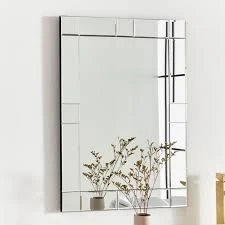

The Significance and Benefits of Low-E3 Glass in Modern Architecture
In the realm of contemporary architecture and building design, the materials used can significantly influence both energy efficiency and aesthetic appeal. Among the innovative solutions available, Low-E3 glass stands out as a pivotal advancement. Low-E, or low-emissivity, glass exhibits a special coating that reflects infrared energy while allowing visible light to pass through. The “E3” designation indicates specific performance characteristics, making this glass an excellent choice for residential and commercial buildings alike.
The Significance and Benefits of Low-E3 Glass in Modern Architecture
Moreover, the use of Low-E3 glass enhances comfort within indoor spaces. By effectively filtering out harmful ultraviolet (UV) rays while still allowing natural light to enter, it helps to minimize glare and reduce the fading of furniture, carpets, and artwork. This balancing act of maximizing natural light while mitigating the negative effects of UV radiation makes Low-E3 glass an ideal choice for locations with large windows or glass facades. Thus, occupants enjoy a more pleasant living and working environment without compromising on design aesthetics.

In addition to economic and environmental benefits, Low-E3 glass also offers superior clarity and durability. Unlike traditional glass, which can distort colors and images, Low-E3 glass maintains crystal-clear visibility, making it perfect for retail spaces, office buildings, and homes where visual appeal is paramount. The durability of Low-E3 glass means that it is resistant to scratches and other forms of wear, ensuring that it remains aesthetically pleasing for years to come.
The architectural flexibility afforded by Low-E3 glass is another compelling reason for its growing popularity. Available in various designs, including clear, tinted, and frosted options, Low-E3 glass can complement a broad range of architectural styles—from contemporary to traditional. It can be used not only in windows but also in glass doors, skylights, and curtain walls, allowing architects and designers to create stunning structures that are both functional and visually striking.
Furthermore, as building codes increasingly prioritize energy efficiency and sustainability, the use of Low-E3 glass aligns with these emerging regulations. Incorporating this technology meets energy performance standards and can help project owners achieve green building certifications, fostering a positive competitive advantage in the marketplace.
In conclusion, Low-E3 glass represents a significant evolution in building materials, merging energy efficiency with aesthetic elegance. Its ability to regulate temperature, filter UV rays, and enhance visibility makes it an invaluable asset in modern architecture. As the demand for sustainable and cost-effective building solutions grows, Low-E3 glass is set to play a crucial role in shaping the future of construction, paving the way for energy-efficient, comfortable, and aesthetically pleasing environments. Embracing such innovative materials not only benefits individual properties but also contributes to a collective effort towards sustainability in the architectural industry.